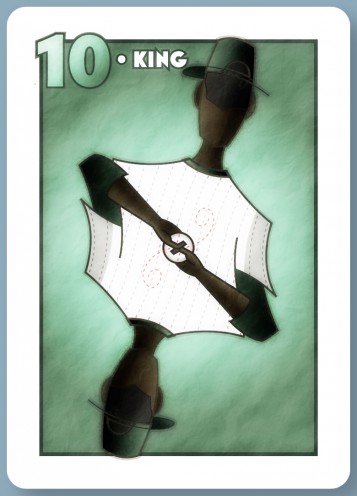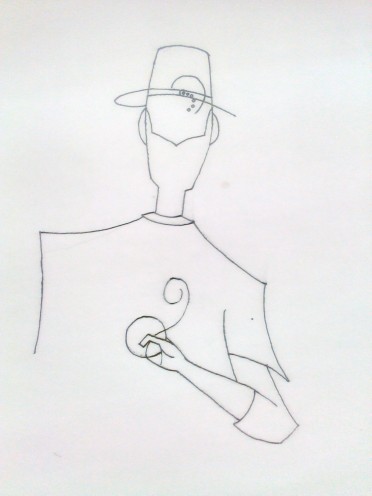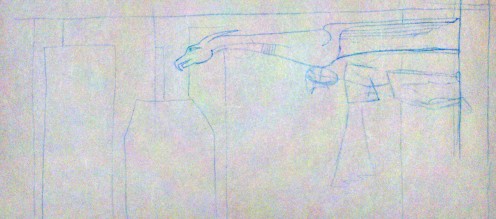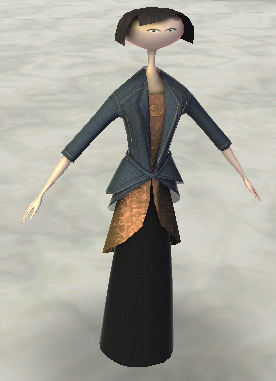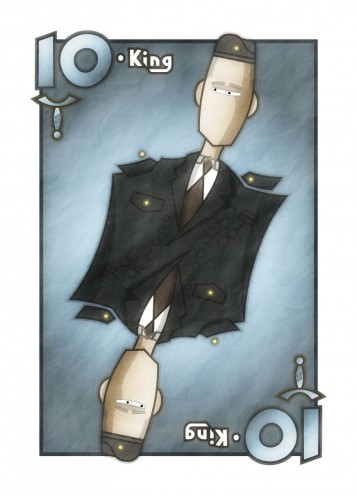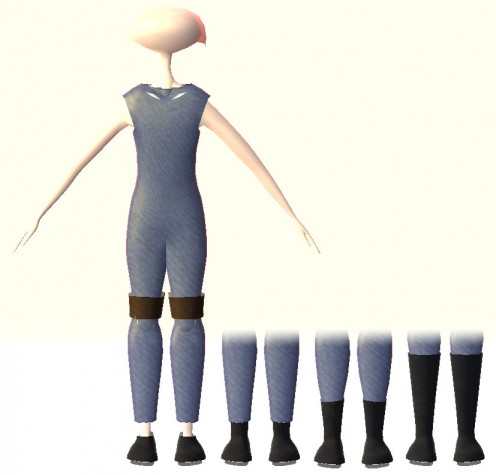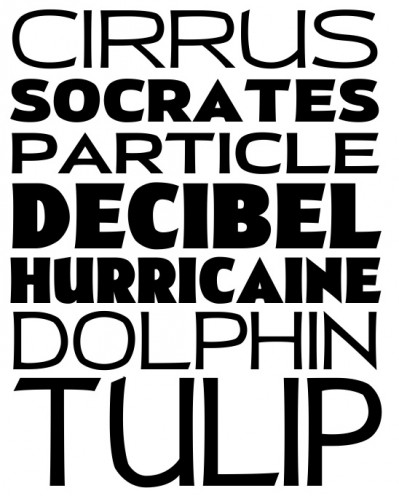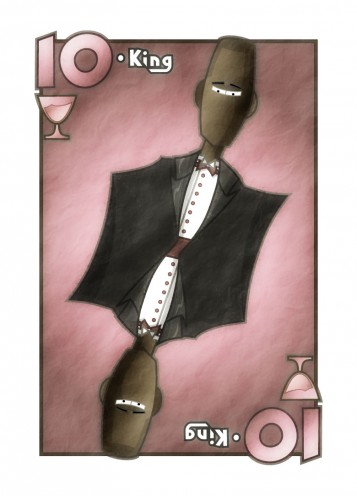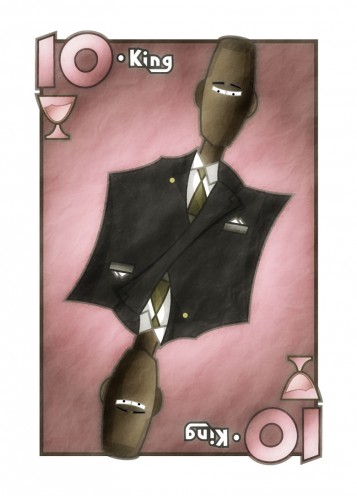So here’s my submission to the Girl Wonder banner contest (click to enlarge):
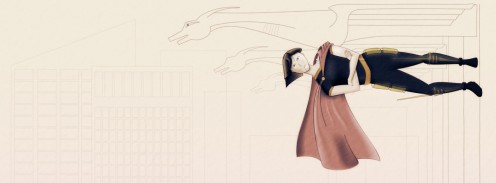
And just to get the good stuff out there first, have a new revision:
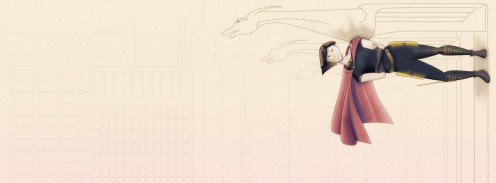
This was made after the contest deadline, but I was kinda fried on Sunday and thought I’d try to clean this up a bit, just to do it.
Rather than a what went right / what went wrong sort of thing, I thought I’d break this up into smaller chunks by subject. So here goes…
motivation
It’s amazing what an external deadline can do. I’ve wanted for quite some time to work on my people drawing skills, and this contest was a great excuse to do that. Also, Marie and I have been talking about doing a superhero comic together, and this was a good way to dive in and see if I was really capable of doing comic-appropriate art to my satisfaction. (I’m pleased to report that I’ve decided that the answer is yes, which I wasn’t certain of at all going in.)
You could say the timing could have been better — also had a big work deadline coming up — but ultimately, I think that having a single, isolated project to work on during such a deadline helped me focus during regular work.
anatomy
Overall, I think the character’s body came out pretty natural and realistic looking. Mostly I credit careful planning — figuring out the character’s proportions in advance with a simple stick model that I then drew over.
But as you may recall, when last I posted about that, I had a decent looking sketch with a not-so-well-proportioned upper body.
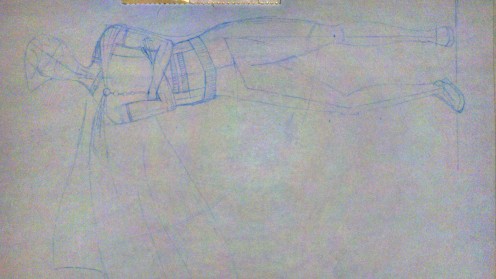
The next time I was able to work on this, I was away from home, and unable to transfer any changes to my sketch into the computer. So I just went straight into Photoshop and enlarged the arms and shoulders a bit, which nicely fixed the long torso problem.
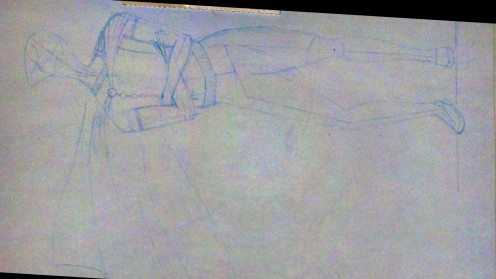
(Yes, I used Photoshop to try to make a figure’s proportion’s more realistic. 🙂 )
I mentioned I might do this, and while it was kind of cool and necessary to be able to do this while away from home, I’m thinking now that it’s not really a great solution. My first priority should be learning to detect problems before I’ve started drawing over them. If a problem does slip through, generally speaking, it would probably be best to adjust the sketch directly, so I get good at doing this right on paper.
layers, layers, layers
I made extensive use of Photoshop and Illustrator’s nondestructive filters and layers. I’m not sure I can explain in well here, but basically what that means is that things like colors, shading and special effects can all be handled independently.
So in the image below, you can see each of those things getting added, one by one, to a simple black & white outline.
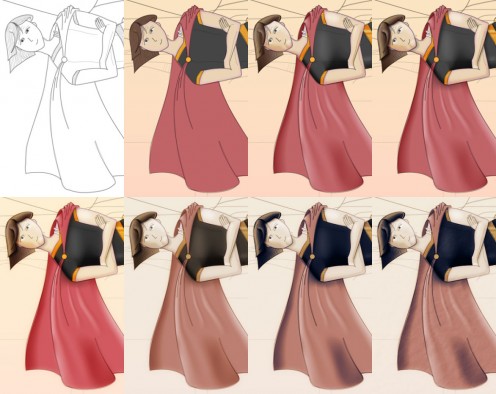
Despite its complexity, this worked out pretty well. I could quickly go back to any layer in my documents and make changes that would propagate forwards to the final product automatically. So, for instance, if I decided I didn’t like the color of the cape, I could change just my color layer and the shading and shadows would be preserved.
shading
So like 14 or so years ago I was trying to do coloring for an online comic (that sadly never got off the ground), and I was trying to do it in Photoshop, using its drawing tools. It didn’t turn out very well; everything was kind of muddy. There were highlights and there were shadows, but my shading didn’t really clue you in to the precise shapes of things at all. Sure, my skills weren’t very good, but that distinctive Photoshop brush muddiness is something I’ve seen even in professionally produced comics.
For this contest, I wanted to make sure my shading was crisp and detailed, so you got a sense of cheekbones and wrinkles in the cape, things that aren’t being expressed with linework.
Illustrator has this thing called gradient meshes, which I figured would work well here. The third image on the top row of the image above introduces some gradient meshes I used for shading, most notably on the cape. Again, I don’t want to go into too much technical detail, but while I got the crispness I wanted, all those meshes were a pain to work with.
Next time I do this, I guess I basically have to options: I can learn to work more efficiently with gradient meshes, or I can revisit my homemade paint program, which contains what’s supposed to be a simple system for doing this kind of work, but which needs some fine tuning before it’s really usable. Neither of those options sounds immensely attractive.
drapery
The cape makes no sense. It isn’t just unrealistic or poorly executed; the geometry of it is simply impossible.
I only realized this the morning after I turned in my submission.
I think my big hangup there was that I was trying too hard to figure out what this thing would like like, when I should have been thinking about how it behaved.
For my revision, I tried to think of the cape as a bunch of strings. Like a beaded curtain. I imagined that the curtain was anchored on the character’s back and shoulders, and I imagined individual strings draping over and hanging off of different points on the character. It was easy to figure out where each string would fall. And then, you can kind of mentally stitch these one-dimensional strings together and figure out how this two-dimensional piece of cloth is going to look in three dimensions.
I don’t know if that’s the best approach, but it was good to figure out some sort of manageable approach, if only after the contest deadline.
triage
The reason the background isn’t colored in is that I realized I wasn’t going to have time to do everything I wanted, and rather than have a whole image half complete, I thought I’d submit something with a good looking character and a sketched in environment. Getting the character right is what I needed the most work on.
Similarly, I totally punted on the costume; again, while I’d find it an interesting challenge to come up with something theatrical and tasteful, it just wasn’t a priority.
That’s not totally a bad thing. There’s something kind of appealing about the utilitarian jumpsuit look.
looking ahead
Marie and I have been talking for a while about this superhero comic thing, and I’m really excited about it now. There’s still a lot of workflow issues I need to sort out if I were to do that many illustrations, but this experience has convinced me that it’s at least possible.
